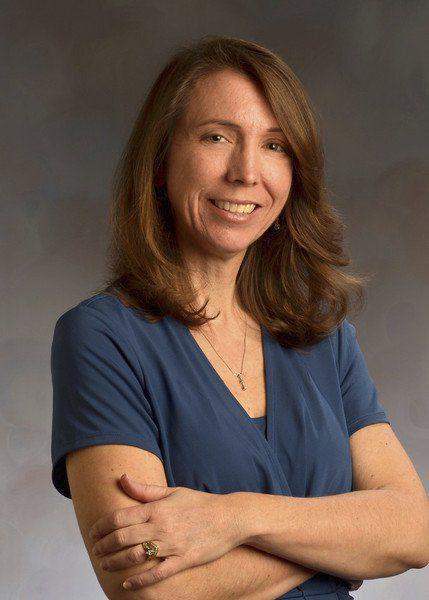'Body Farm' researcher shares experience with ISU audience
For the better part of two hours Friday evening, a packed University Hall Theater at Indiana State University were spared no detail when learning about body decomposition from one of America’s leading forensic anthropologists.
Dawnie Wolfe Steadman, director of the University of Tennessee-Knoxville’s Forensic Anthropology Research Center, or body farm, shared how her research is applied to human rights violations and how it helps law enforcement make sense of skeletal remains.
Using the bodies of per-registered donors, Steadman and her team of forensic anthropologists study all factors concerning the decomposition of bodies, including; temperature, soil composition, insects, gut bacteria, life style of the deceased and various scavengers and how and when they feed on corpses.
She said understanding how a body decomposes when exposed to all manner of factors can help law enforcement or medical examiners make a positive identification of remains.
Like in the case of a 10-year-old boy who was found buried in a basement some three years after his death.
Steadman, with her wealth of experience, was called in to help determine to whom the remains belonged, how long they’d been in the basement and the circumstances that led to his death.
Using a series of slides, Steadman was able to show the University Hall audience what the scene looked like and what anthropological techniques were used to answer investigators’ questions.
As she showed, a spiral fracture in a hand and broken teeth were her first indications that the boy was physically abused. They later found abnormalities in child’s long bones, the result of scurvy, she determined.
Long story short, Steadman summed up for the crowd, her anthropolgic findings combined with the findings of law enforcement were able to determine both the dead child and his brother were regularly locked in cages, neglected, beaten, starved and drugged.
Her work on the case contributed to the conviction of the boy’s adopted father and a lesser plea deal for the adopted mother.
And while the exhumation and examination of a single body can be difficult enough, Steadman also regularly helps to examine mass graves around the world.
One such case took her to northern Uganda, where the devastation wrought by Joseph Kony and his Lord’s Resistance Army, and the equally horrific response by the Ugandan government, littered the countryside.
Steadman said it is estimated that 100,000 Ugandan’s were killed in the civil war between 1986 and 2006, many of whom were hastily buried in shallow, mass graves.
But different from her typical work of exhumation and forensic identification, the Ugandan crisis has forced her and her team to lean more on her anthropology background.
Through a series of interviews with locals and, subsequently, a better understanding of local tradition and lore, Steadman determined it might not be most prudent to excavate the graves.
“They believe in traditional spirituality, or that the dead have agency over the living,” Steadman said. “If the spirits of the dead are angered, it’s believed, they can cause disease in children, rotting of crops and things like that.
“And so just going in and excavating mass graves without understanding what this might do to the spirituality of these people would be really really uncomfortable. It shouldn’t be done.”
And so, Steadman said, they’ve set out to get an understanding of where the mas graves are, who might be in them, are they bothersome to the locals or if people want the graves relocated.
Steadman was invited to ISU as part of the Wittman Speaker Series, named in honor of Laura and Jim Wittman.
Now in it’s third year, the series focuses on archaeology, anthropology, liberal arts and any current topic in science that may further the educational experience of students.
